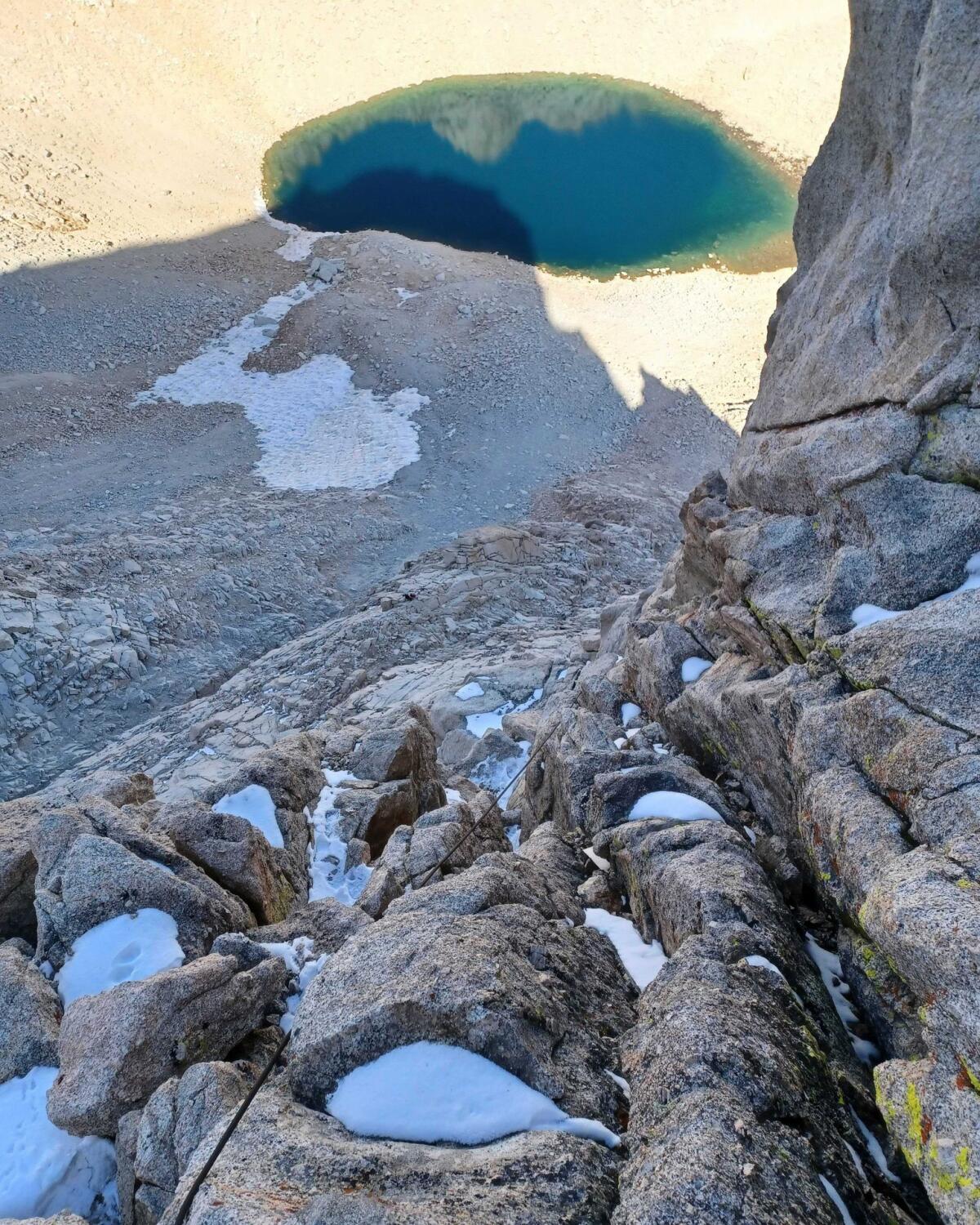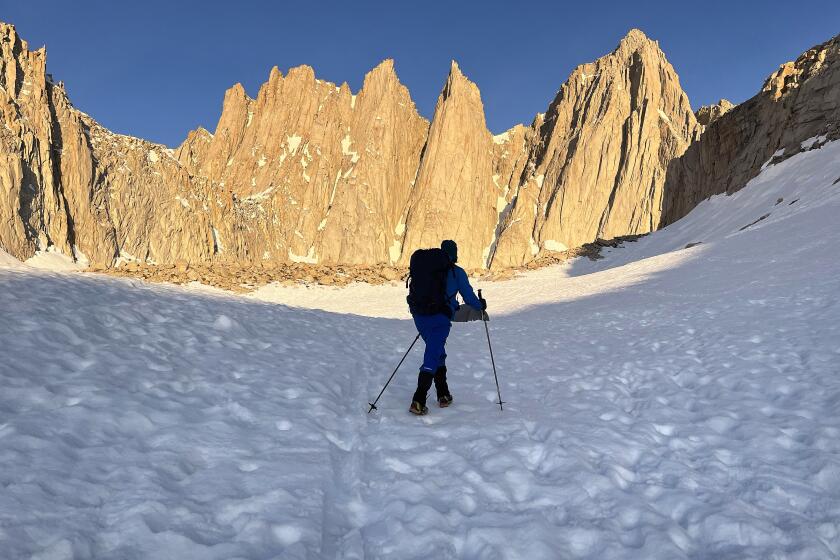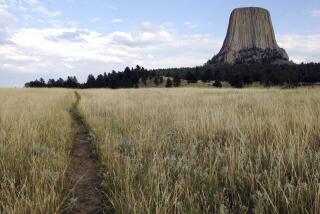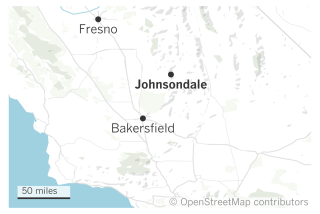After 18 hours of uncertainty trapped on icy mountain face, Mt. Whitney climbers are rescued

As the late September sun set on the East Buttress of Mt. Whitney, two climbers realized they were in a treacherous situation — they were stuck in their climbing harnesses, attached to the steep rock wall by ropes as the temperature plummeted toward freezing.
For the next 18 hours, the climbers — a man and a woman — were left hanging until help could arrive. The man, quite literally, was at the end of his rope after rappelling 100 feet below his partner and finding himself unable to climb back up.
Volunteers with Inyo County Search and Rescue brought them back to safety on Sept. 22. But things could have gone terribly wrong, county Sheriff’s Deputy Ryan Reuther, who coordinated the rescue, told The Times.
For starters, there’s the danger of freezing temperatures, he said. Then there’s the risk of losing blood flow while spending hours strapped in a harness. Not to mention loose rocks that can come tumbling down from above, he added.
The hikers wound up stuck after encountering snowy and icy conditions they were not prepared for — a mistake that, as Inyo County Search and Rescue was quick to point out, could have been avoided.
“This party was beyond their skill level in these areas, both in terms of climbing and general alpine movement,” the organization said in an incident report. “This mission was the result of a series of bad decisions (until the good decision to call for help) that were entirely avoidable if proper preparation had been done.”

Although visitors might expect winter to be the most dangerous time on the 14,505-foot mountain — the highest peak in the contiguous United States — summer and early fall are actually the busiest times for rescuers, said Reuther.
In the winter, only a small number of serious climbers attempt the expedition and are typically armed with crampons, ice axes and avalanche safety training, he explained. But in the summer, many more people flock to Whitney and the surrounding mountains and are often unprepared for the harsh terrain.
“More often than not, people are surprised by the snow when it’s late August, early September, but we’re up at 13,000 feet and those storms can absolutely bring snow,” he said. “A lack of preparedness with gear is something that we do see.”
Even without much snow, the standard spring hike to Mt. Whitney’s summit is a punishing ordeal. But in this year’s extraordinary conditions, it is a full-on winter mountaineering expedition, requiring serious gear and the expertise to use it.
In May, two hikers died on Mt. Whitney while attempting to summit days after a storm deposited about a foot of snow on the top of the mountain. Since then, the search-and-rescue team has completed about 35 rescue missions, Reuther said.
In fact, on the same September day that the two climbers were rescued from Whitney, three other hikers had to be rescued from Chocolate Lakes near Bishop, he said.
The Whitney climbers set out from the base of the mountain at 1:30 a.m. on Sept. 21 with plans to summit via the East Buttress route, which includes 11 pitches, according to the incident report. A pitch is the section of a climbing route in between the metal anchors that climbers clip their ropes into.
The pair started their ascent of the East Buttress around 10 a.m., but five hours later had only reached the top of the third pitch. With scattered snow and limited daylight, they attempted to descend the mountain but were unable to do so and called 911 for help.
Rescuers spent an hour on the phone attempting to coach a self-rescue, but the climbers were not comfortable executing the suggested methods.
With daylight gone and no helicopter access to the high-altitude area, the pair were told to shelter in place overnight.
A rescue team was brought part of the way up the mountain by helicopter the next morning and climbed the East Buttress to perform the rescue. The following day, additional volunteers completed the climb again to retrieve the hikers’ abandoned equipment.
Inyo County Search and Rescue is a nonprofit under the authority of the Sheriff’s Office and is composed entirely of unpaid volunteers. These good Samaritans respond to rescue calls at any hour of the day, often putting their own safety at risk.
“I like to tell people that they’re just ordinary people that go into those mountains and do extraordinary things,” Reuther said. “I see it all the time — people would die if that team didn’t do the things that they do.”
More to Read
Sign up for Essential California
The most important California stories and recommendations in your inbox every morning.
You may occasionally receive promotional content from the Los Angeles Times.












